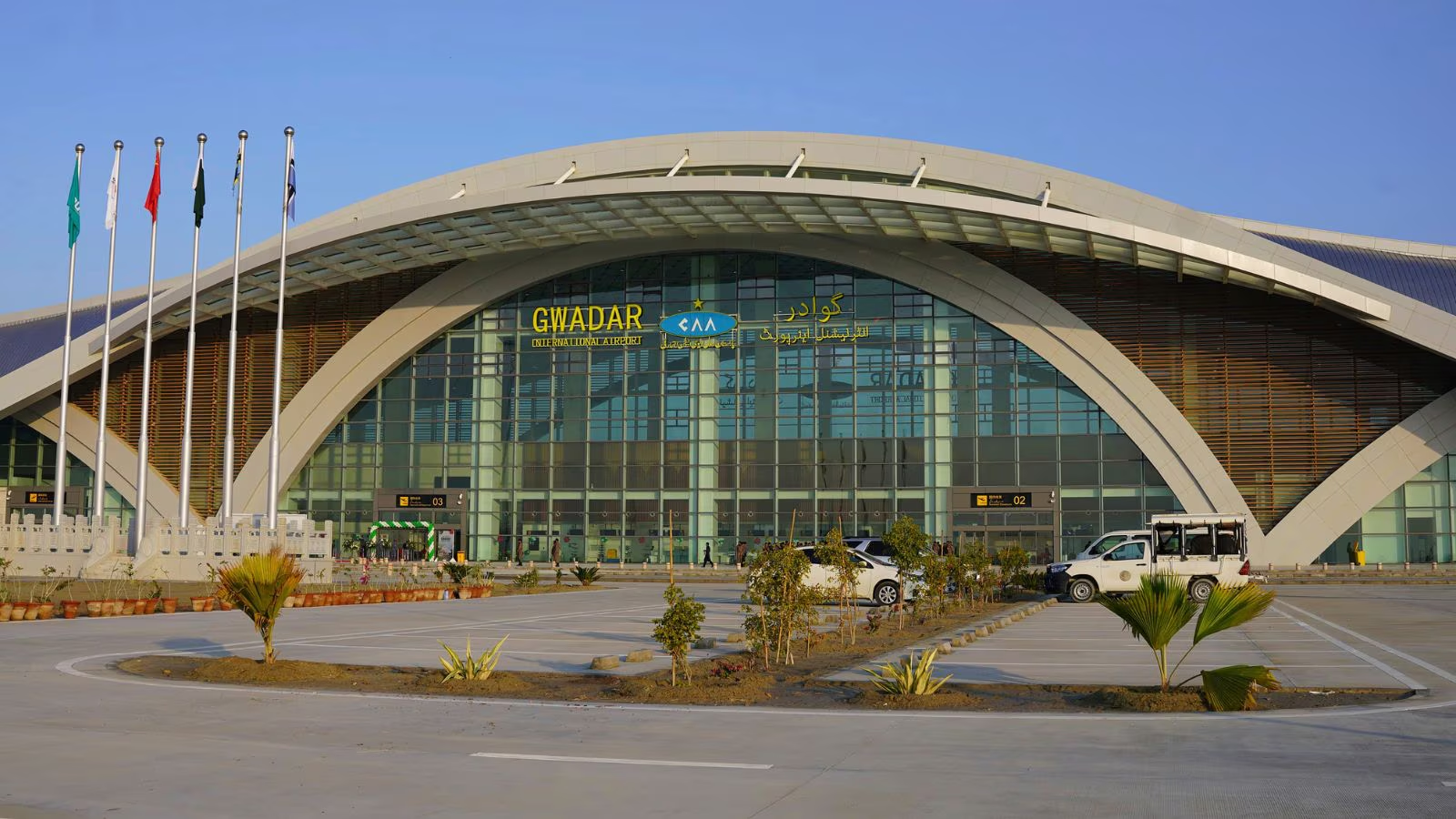The New Gwadar International Airport, located in the coastal city of Gwadar, Pakistan, is a striking paradox. Despite being completed in October 2024 with an investment of USD 240 million, the airport remains inactive with no passengers or operational flights.
Entirely financed by China, the facility was constructed as part of the China-Pakistan Economic Corridor (CPEC), a multi-billion-dollar project aimed at linking China’s western Xinjiang province with the Arabian Sea.
However, the airport’s intended benefits remain unclear to the local population, who struggle with economic hardship, water shortages, and electricity constraints.
A Mega Project Amidst Local Struggles
The construction of New Gwadar International Airport has been hailed as a transformational milestone by Pakistani authorities, yet there is little evidence of significant development in the region. Gwadar, situated in the impoverished Balochistan province, lacks fundamental amenities such as clean water and electricity.
The city is not connected to Pakistan’s national power grid and relies on electricity from neighboring Iran or solar panels. While the airport has been designed to accommodate 400,000 passengers annually, its necessity for the city’s population of just 90,000 is widely questioned.
Read : JetBlue Pilot Jeremy Gudorf Arrested at Boston Airport for Sexual Exploitation of Minor
Azeem Khalid, an international relations expert specializing in Pakistan-China relations, argues that the airport is primarily intended to serve Chinese interests rather than the needs of Pakistanis.
Read : From Check-In to Take-off : Ranking the World’s Premier Airports
“It is for China so they can have secure access for their citizens to Gwadar and Balochistan,” he stated. The heavy Chinese investment in the region, which includes the deep-sea port of Gwadar, has not translated into improved living conditions for the local population. Instead, it has led to increased military presence and security concerns.
Rising Tensions in Balochistan
The influx of Chinese investment in Gwadar has intensified long-standing tensions in Balochistan. Separatist militants in the province have accused the Pakistani government of exploiting local resources while offering little benefit to the indigenous population.
The Baloch insurgency, which has been active for decades, has targeted both Chinese workers and Pakistani security forces. The increased militarization of the region, meant to protect Chinese investments, has only added to the local population’s grievances.
Gwadar has become a heavily policed city, with military checkpoints, barbed wire, and surveillance watchtowers dominating the landscape.

Roads are frequently closed to ensure the security of Chinese workers and visiting Pakistani officials. Journalists visiting the city are closely monitored by intelligence personnel, and certain locations, such as the fish market, are deemed too sensitive for media coverage.
The city’s residents, once free to move about and enjoy their natural surroundings, now live under constant scrutiny. Khuda Bakhsh Hashim, a 76-year-old native of Gwadar, reminisced about the past when the city was a peaceful fishing hub under Omani rule and a stopover for ships traveling to Mumbai.
“We used to enjoy all-night picnics in the mountains or rural areas. Now we are asked to prove our identity and justify our presence in our own land,” he lamented.
The Unfulfilled Promises of CPEC
Despite government claims that CPEC has created 2,000 jobs in Gwadar, locals remain skeptical about who truly benefits from these employment opportunities.
There is little clarity on whether these positions are allocated to the native Baloch population or to workers brought in from other parts of Pakistan. Many Gwadar residents argue that they have seen little to no economic uplift from the massive Chinese investment in their city.
The concerns of the local community are further validated by Abdul Ghafoor Hoth, the district president of the Balochistan Awami Party, who pointed out that no Gwadar residents were hired at the airport—not even as security personnel. “Forget the other jobs, how many Baloch people are even employed at this port built for CPEC?” he questioned.
The rising discontent among locals has led to protests demanding better living conditions, including access to basic necessities such as electricity and clean water.

In December, Hoth organized daily demonstrations that lasted for 47 days, ultimately compelling authorities to promise improvements. However, no significant progress has been made since those assurances were given.
Security concerns have also played a role in delaying the airport’s inauguration. There were fears that militants could use the nearby mountains as launchpads for attacks on the facility.
As a result, instead of a grand opening ceremony, Pakistani Prime Minister Shehbaz Sharif and his Chinese counterpart Li Qiang conducted a virtual inauguration. The first flight to the airport was conducted without media presence or public access.
The increased security measures and lack of transparency have only heightened the sense of alienation among the Baloch people. International relations expert Azeem Khalid noted that as Chinese investments poured into Gwadar, so did an extensive security apparatus that alienated the local community.
“The Pakistani government is not willing to give anything to the Baloch people, and the Baloch are not willing to take anything from the government,” he remarked.
For now, the New Gwadar International Airport stands as a symbol of unfulfilled promises and growing disparities. Whether it will ever serve its intended purpose or remain a monument to geopolitical ambition remains uncertain.
let’s enjoy few years on earth with peace and happiness….✍🏼🙏

